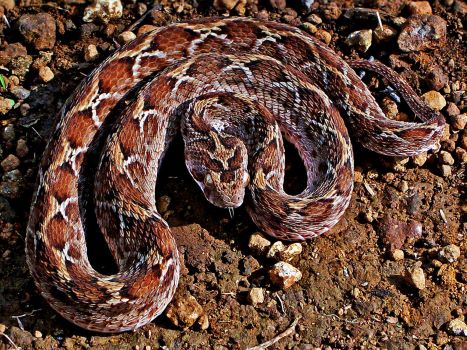Encounter with Vipers
by Sr. Cecily Bourdillon MMM Zimbabwe 23/02/2022
 Not long after my arrival at Zungeru Rural Health Centre in Northern Nigeria, I was called to see a young woman who was bleeding to death having been bitten by a snake. We were unable to give our patient a blood transfusion nor had we anti snake venom serum to administer. All we could do was to refer our patient to the general hospital in the nearest town, Minna, and hope that there she would receive the treatment she needed.
Not long after my arrival at Zungeru Rural Health Centre in Northern Nigeria, I was called to see a young woman who was bleeding to death having been bitten by a snake. We were unable to give our patient a blood transfusion nor had we anti snake venom serum to administer. All we could do was to refer our patient to the general hospital in the nearest town, Minna, and hope that there she would receive the treatment she needed.
This patient was the first of many patients I would see bleeding from a snake bite – the bite of a Carpet Viper.
Zungeru had once been a strategic town in Northern Nigeria. Sir Frederick Lugard had established the railway system and Zungeru station had become an important and busy junction. However, in the 1970s when MMM opened the Health Centre, Zungeru was a market village on the main road connecting Northern and Southern Nigeria.
I later learned that Zungeru was situated in the Carpet Viper Band that stretched across northern Nigeria. This small snake with its attractive markings, protected itself and caught its food with its bite when it injected poisonous venom into its victim. The venom of the Carpet Viper interferes with the clotting mechanism of the blood and results in bleeding and death. The severity of the bite depends upon the amount of venom injected and not all people bitten die from bleeding. There were many other snakes around besides the Carpet Viper such as the Cobra that causes tissue destruction and the Mamba that causes paralysis leading to rapid death. Walking to the clinic in the morning we might meet the Carpet Viper crossing our path. We had found a Cobra on our verandah and seen a Mamba at a distance. Snakes were inhabitants of our environment so it was little surprise to have many patients come to us for treatment of a snake bite.
Not all patients bitten by the Carpet Viper needed the anti venom serum.We introduced a simple test – the ‘clotting time’ of the patient’s blood – to assess whether the patient was in danger of beeding. The survival of those patients with prolonged clotting time depended upon the availability of the anti snake venom serum specific for the Carpet Viper. We recorded the details of our patients and the management that they received.
Sometime later I had the opportunity to do the Diploma in Tropical Medicine at the Liverpool School of Tropical Medicine and was delighted to be introduced to the Snake Department where my story was listened to with great interest. Two members of the department decided to visit Zungeru to research the Carpet Viper.
On my return to Zungeru I was to collect blood samples, continue keeping records and communicate with them. They came to Zungeru and set up a regimen of management for all patients admitted with snakebite. The blood clotting time was done on all these patients. Those patients with prolonged clotting time (over 10 minutes) which put them in danger of bleeding, were given a saline infusion in which were 4 vials of the specific Anti Snake venom serum which ran in for four hours after which the clotting time was repeated. If it was still prolonged the infusion was repeated – even a third time if necessary – until the clotting time became normal. All the staff were trained to follow this regime. This successful treatment of patients with snake bite removed the dread health workers experienced on admitting a patient with snake bite. The project and results were published and the treatment regimen was propagated in medical facilities in Nigeria.
We were ever grateful to the team of the Snake unit at the Liverpool School of Tropical Medicine who enabled us to save the lives of many people bitten by the Carpet Viper.
SEE ALL BLOG POSTS
